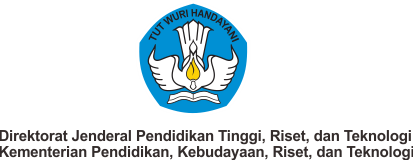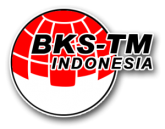The Effect of the Gap Distance on The Corrosion Rate of SS400 Steel and C27000 Brass
Abstract
Crevice corrosion occurs due to differences in oxygen concentration inside and outside the gap. These experiments are conducted on the crevice formed by SS400 Steel and the C27000 Brass on the base of gap distance parameters in the ammonia polluted environment. Such crevice often found in boiler joints, turbines and machinary parts. Corrosion rate of SS400 steel when it stand alone in the ammonia environment is 0.7554 mpy while the interface potential is -130 mV VS Cu/CuSO4. The corrosion rate of C27000 Brass when stand alone at related ammonia environment is 20.144 mpy and the interface potential is -1191 mV VS Cu/CuSO4. When both metals combine to form a crevice, the corrosion rate of steel increased by 28% averagingly. The tests include a gap where the two metals mating each other (no distance), forming a distance of 0.239 mm and 0.398 mm. The interface potential of both metals when touch -518 mV VS Cu/CuSO4, -288 mV when formed a gap distance 0.239 mm and 0.398 mm. On the contrary the corrosion rate of Brass C27000 decreases significantly upto 60% when joining to form a gap with steel. Interface potential of Brass C27000 when forming a gap with no distance with steel is – 632 mV VS Cu/CuSO4.
Keywords
Full Text:
PDFReferences
Mars G Fontana, Corrosion Engineering, Mc
Graw Hill Series in Materials Science and
Engineering, page 51-59, Singapore 1987.
Denny A Jones, Principles and Prevention of
Corrosion, Macmillan Publishing Company,
page 220-222. Singapore 1992.
Callister, W. D. and Rethwisch, D. G.
(2012) ‘Fundamentals of Material Scienec and Engineering An Integrated Approach’, in Fundamentals Of Material Scienec and Engineering An Intergrated Approach. 4 th. United States Of America, p. 1087.
ASTM G1-90 (Reapproved 1999), Standard
Practice for Preparing, Cleaning, and
Evaluating Corrosion Test
Specimens.
ASTM G31 – 72 (2004),’ Standard Practice for
Laboratory Immersion Corrosion Testing of
Metals 1’, doi: 10.1520/G0031-72R04
Mars G Fontana, Corrosion Engineering, Mc
Graw Hill Series in Materials Science and
Engineering, page 51-59, Singapore 1987.
Denny A Jones, Principles and Prevention of
Corrosion, Macmillan Publishing Company,
page 220-222. Singapore 1992.
Callister, W. D. and Rethwisch, D. G.
(2012) ‘Fundamentals of Material Scienec and Engineering An Integrated Approach’, in Fundamentals Of Material Scienec and Engineering An Intergrated Approach. 4 th. United States Of America, p. 1087.
ASTM G1-90 (Reapproved 1999), Standard
Practice for Preparing, Cleaning, and
Evaluating Corrosion Test
Specimens.
ASTM G31 – 72 (2004),’ Standard Practice for
Laboratory Immersion Corrosion Testing of
Metals 1’, doi: 10.1520/G0031-72R04
Mars G Fontana, Corrosion Engineering, Mc
Graw Hill Series in Materials Science and
Engineering, page 51-59, Singapore 1987.
Denny A Jones, Principles and Prevention of
Corrosion, Macmillan Publishing Company,
page 220-222. Singapore 1992.
Callister, W. D. and Rethwisch, D. G.
(2012) ‘Fundamentals of Material Scienec and Engineering An Integrated Approach’, in Fundamentals Of Material Scienec and Engineering An Intergrated Approach. 4 th. United States Of America, p. 1087.
ASTM G1-90 (Reapproved 1999), Standard
Practice for Preparing, Cleaning, and
Evaluating Corrosion Test
Specimens.
ASTM G31 – 72 (2004),’ Standard Practice for
Laboratory Immersion Corrosion Testing of
Metals 1’, doi: 10.1520/G0031-72R04
DOI: http://dx.doi.org/10.36055/fwl.v2i1.7569
Refbacks
- There are currently no refbacks.

FLYWHEEL: JURNAL TEKNIK MESIN UNTIRTA is licensed under a Creative Commons Attribution 4.0 International License.








